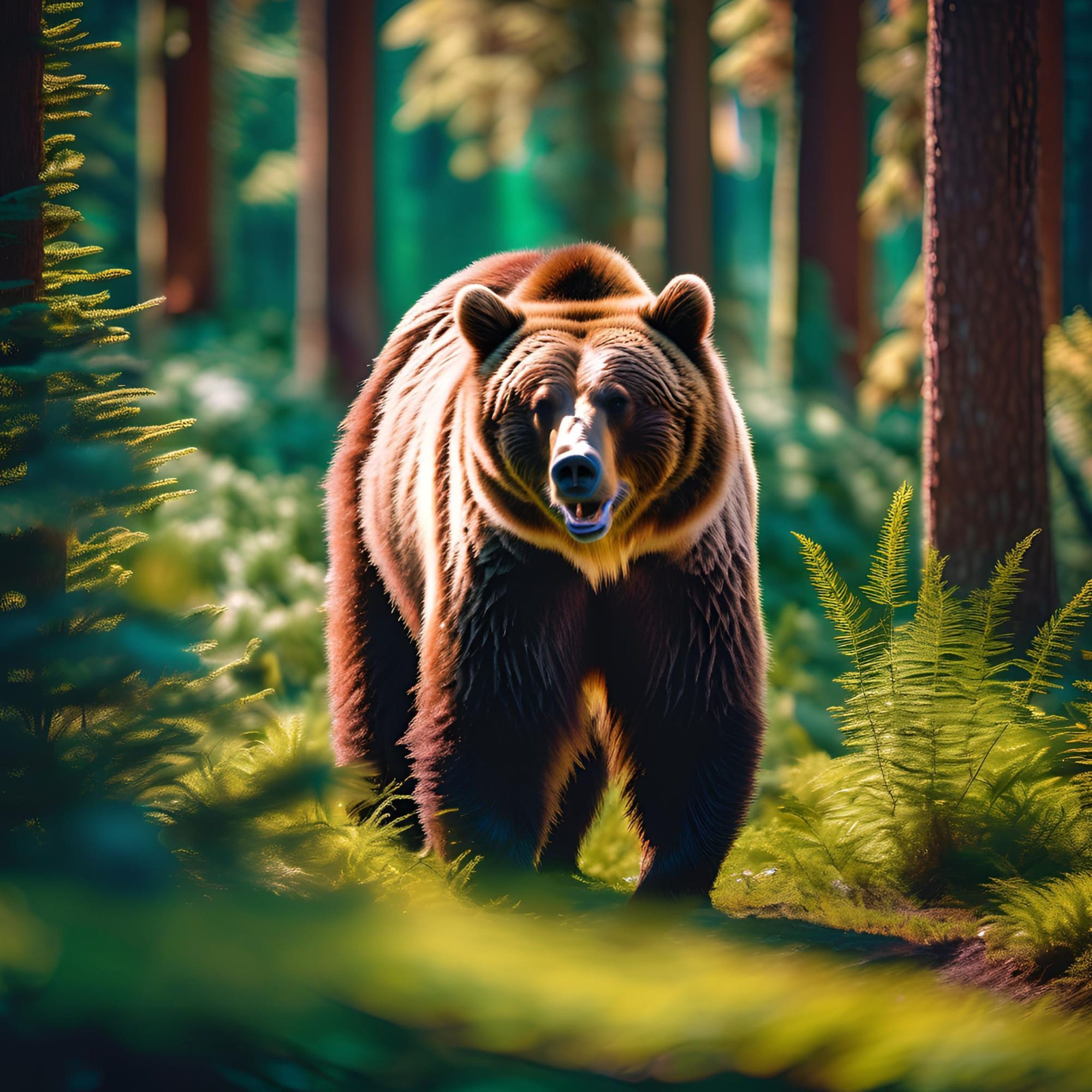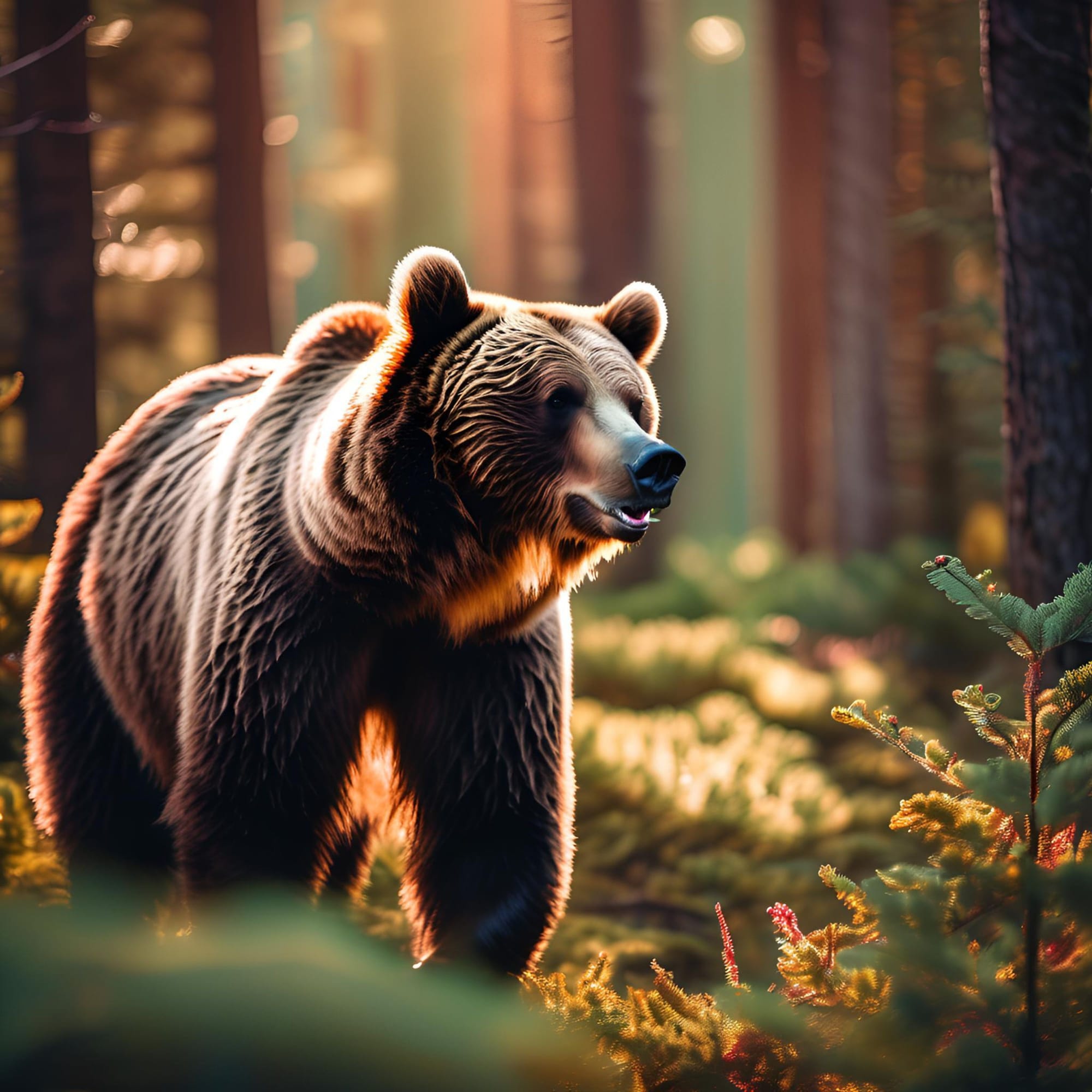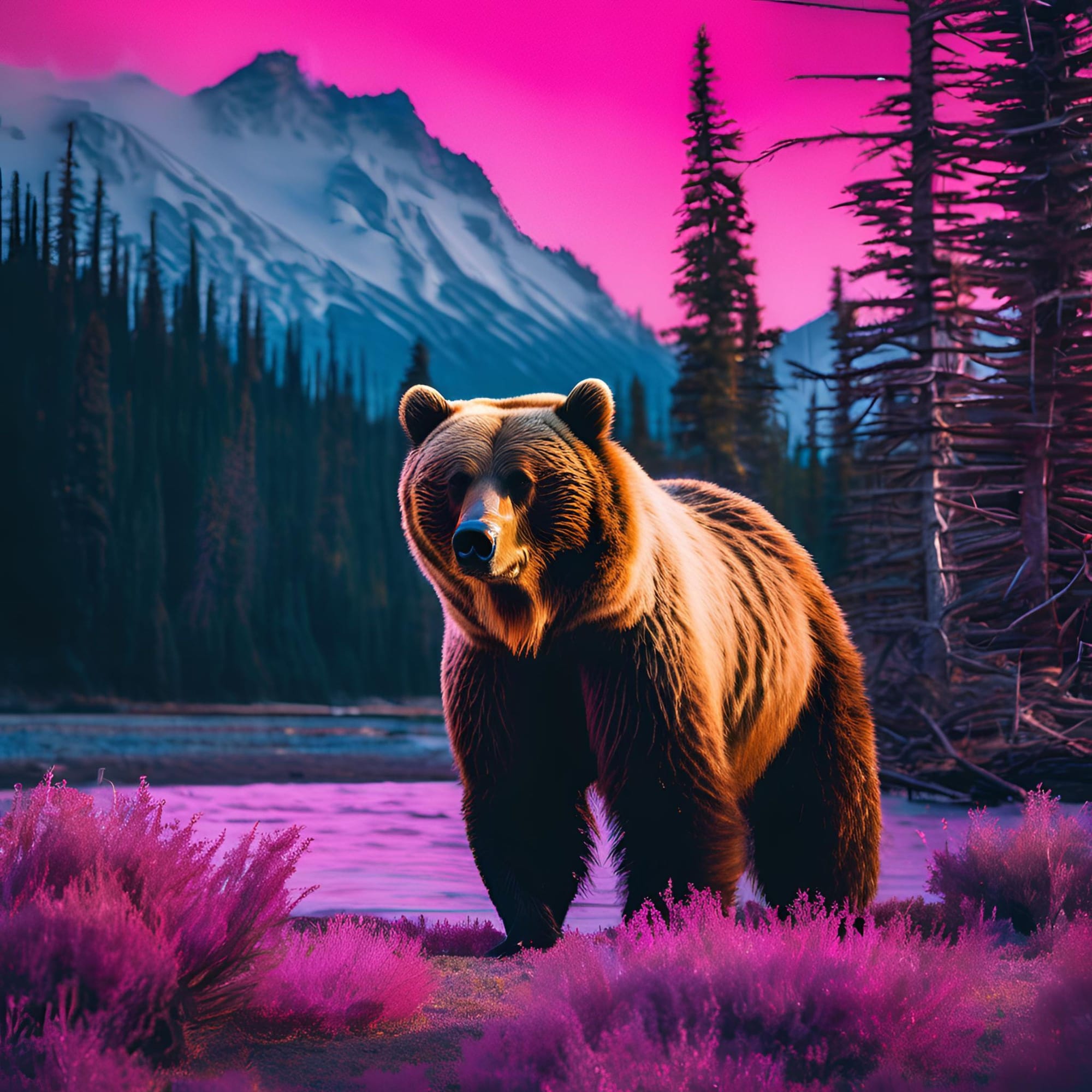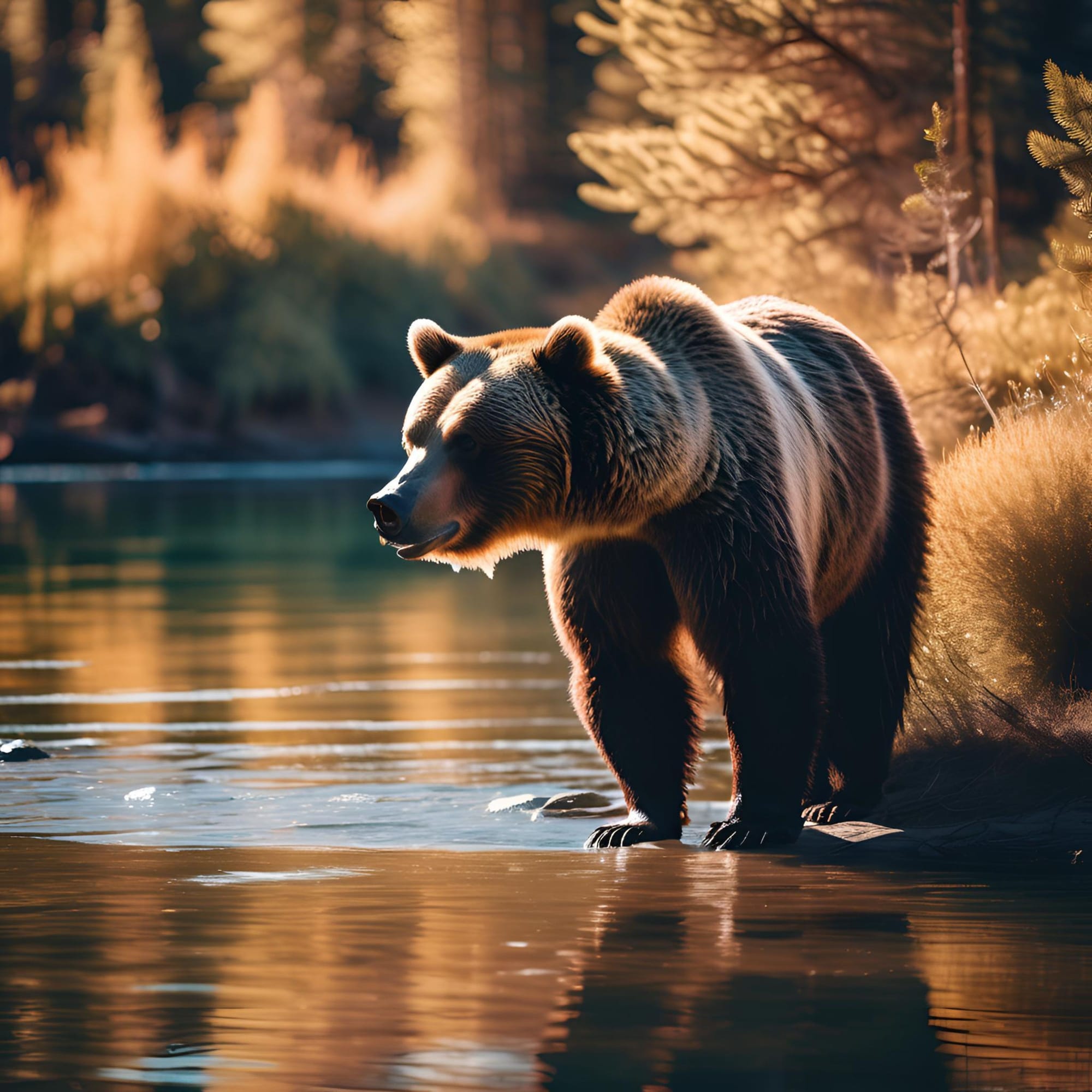"Exploring the Life of Grizzly Bears: Habitat, Diet, Behavior, and Conservation"










buymeacoffee.com coming soon..
Introduction to Grizzly Bears
Grizzly bears, scientifically known as *Ursus arctos horribilis*, are one of the most iconic and formidable species of bear in North America. With their distinctive hump on the shoulders and striking fur that can range from blonde to dark brown, these magnificent creatures have captivated the interest of wildlife enthusiasts and researchers alike. Grizzly bears are a subspecies of the brown bear and are primarily found in the western regions of Canada and the United States, where they inhabit a variety of ecosystems.
These powerful animals are not only known for their impressive size—adult males can weigh between 400 to 1,500 pounds—but also for their remarkable adaptability to diverse environments, ranging from coastal areas to mountainous terrains. Grizzly bears play a crucial role in their ecosystems as apex predators, helping to maintain the health of their habitats by regulating prey populations and facilitating nutrient cycling through their feeding habits.
Despite their majestic presence, grizzly bears face numerous challenges due to habitat loss, human encroachment, and climate change. Understanding the biology, behavior, and ecological significance of grizzly bears is essential for their conservation and the preservation of the ecosystems they inhabit. In this article, we will explore various aspects of grizzly bears, including their habitat and distribution, dietary habits, social behavior, and the threats they currently face in the wild.
Habitat and Distribution
Grizzly bears are primarily found in North America, with their range extending from the western parts of Canada down through the Rocky Mountains into parts of the contiguous United States, including Montana, Wyoming, and Idaho. Historically, their habitat stretched much further, encompassing a vast area across the northern U.S. and much of Canada. Today, their population is most concentrated in Alaska, where large expanses of wilderness provide ideal conditions for their survival.
The geographic range of grizzly bears is closely tied to their need for large territories for foraging, mating, and raising cubs. They typically inhabit mountainous regions, forests, and tundra, and their distribution can be affected by factors such as food availability, human encroachment, and environmental changes.
Geographic Range
Grizzly bears are primarily found in North America, with their range extending from the western parts of Canada down through the Rocky Mountains into parts of the contiguous United States, including Montana, Wyoming, and Idaho. Historically, their habitat stretched much further, encompassing a vast area across the northern U.S. and much of Canada. Today, their population is most concentrated in Alaska, where large expanses of wilderness provide ideal conditions for their survival.
The geographic range of grizzly bears is closely tied to their need for large territories for foraging, mating, and raising cubs. They typically inhabit mountainous regions, forests, and tundra, and their distribution can be affected by factors such as food availability, human encroachment, and environmental changes.
Preferred Habitats
Grizzly bears are highly adaptable animals, capable of thriving in various habitats as long as their basic needs are met. They prefer areas with dense vegetation that provide ample food sources and cover. Popular habitats include coniferous forests, alpine meadows, and riparian zones near rivers and streams. These environments not only furnish sustenance but also offer shelter, which is essential for both hibernation and protection from predators and human activity.
The availability of water sources is also a critical factor in their habitat selection. Grizzly bears rely on rivers, lakes, and streams for drinking and fishing, particularly during the salmon spawning season when they congregate near rivers to catch this nutrient-rich prey. Open areas for foraging, such as berry patches and grasslands, are equally important during the summer months when their diet consists of a wide variety of plant material.
Impact of Climate Change
Climate change poses a significant threat to the habitat and distribution of grizzly bears. Rising temperatures can alter the landscapes they inhabit, affecting food availability and the timing of seasonal events, such as plant blooming and animal migrations. For example, changes in snowpack and precipitation patterns can influence the growth of vegetation that bears rely on for food.
Moreover, climate change may lead to shifts in the geographic range of grizzly populations as they seek cooler areas or more suitable habitats. Increasing human development in formerly remote areas can further restrict their movements, leading to habitat fragmentation. This fragmentation not only impacts their ability to find food and mates but also increases the likelihood of human-wildlife conflict, as bears venture into populated areas in search of sustenance.
As stewards of the ecosystems they inhabit, the decline or displacement of grizzly bears can have cascading effects on their environment, indicating the need for continued conservation efforts to protect their habitats from the threats posed by climate change and human activity. Understanding the habitat and distribution of grizzly bears is essential for implementing strategies aimed at preserving these magnificent creatures and the ecosystems they help sustain.
Diet and Feeding Habits
Grizzly bears are classified as omnivores, which means their diet consists of a wide variety of foods. This dietary flexibility is essential for their survival, as it allows them to adapt to the seasonal availability of food sources in their habitats. Grizzly bears can consume both plant-based and animal-based foods, making them opportunistic feeders that capitalize on whatever resources are available at different times of the year.
Omnivorous Diet Overview
The omnivorous diet of grizzly bears includes a diverse range of items, such as berries, nuts, roots, fish, and small to large mammals. They are particularly known for their strong preference for salmon, especially during the salmon spawning season. Grizzlies have powerful jaws and teeth that enable them to break into the tough exteriors of nuts and the fibrous roots of plants. Their keen sense of smell also plays a crucial role in locating food sources, allowing them to detect prey or ripe berries from great distances.
Seasonal Food Sources
The availability of food for grizzly bears varies significantly with the changing seasons. In spring, they emerge from hibernation in search of fresh vegetation, including grasses and sedges, which are high in nutrients. As summer progresses, berries such as huckleberries, blueberries, and raspberries become abundant, providing a critical source of calories. During late summer and early fall, the salmon run becomes a focal point for grizzly bears, as they gather along rivers and streams to feast on this rich protein source. In preparation for winter hibernation, bears will eat excessively during the fall, a behavior known as hyperphagia, to build up fat reserves.
Hunting and Foraging Techniques
Grizzly bears employ a range of hunting and foraging techniques depending on the type of food they are pursuing. When targeting fish, they often use a technique called "fishing," where they stand in shallow waters and swipe at the fish with their powerful paws. For larger prey, such as elk or deer, they may rely on stealth and strength, ambushing their targets with a sudden burst of speed. Grizzlies are also known to scavenge from carcasses, taking advantage of the remains left by other predators. Their foraging techniques for plant-based foods often involve digging up roots with their powerful claws or shaking trees to dislodge nuts.
Overall, the diet and feeding habits of grizzly bears reflect their adaptability and resourcefulness in various environments, allowing them to thrive in the wild.
Behavior and Social Structure
Grizzly bears exhibit a range of behaviors that reflect their adaptability and survival strategies in the wild. Understanding their behavior and social structure is essential for appreciating these magnificent creatures and for implementing effective conservation efforts.
Solitary vs. Social Behavior
Grizzly bears are primarily solitary animals, with adults typically preferring to roam and forage alone. This solitary nature is particularly pronounced among males, who often establish and defend large territories to secure access to food and mates. Females, while also largely solitary, may be seen with their cubs during the spring and summer months. The bond between a mother bear and her cubs is particularly strong, as she provides protection and teaches them essential survival skills.
While grizzlies are generally solitary, they can exhibit social behaviors, especially in areas with abundant food resources. For instance, during salmon runs, multiple bears may congregate in the same location to feed. In these situations, bears establish a hierarchy based on size, age, and experience. Understanding their social dynamics is crucial, as it influences access to resources and mating opportunities.
Reproductive Behavior
Reproductive behavior in grizzly bears is characterized by a distinct mating season that occurs from late spring to early summer. During this time, males actively seek out females in estrus, engaging in competitive displays and sometimes aggressive interactions with other males. Successful mating typically results in a gestation period that lasts about eight months, but bears experience delayed implantation, meaning that the fertilized egg will not implant in the uterus until late in the winter.
Females give birth to one to four cubs in a den during the winter months, usually between January and March. The mother will remain in the den with her cubs for several months, providing them with warmth, nutrition, and protection. As the cubs grow, the mother will lead them out of the den in the early spring, teaching them how to forage and navigate their environment.
Communication Methods
Grizzly bears communicate through a variety of methods, including vocalizations, body language, and scent marking. Vocalizations such as growls, grunts, and huffs can convey a range of emotions, from aggression to alarm. Body language, including posturing and physical movements, further enhances their communication, signaling intentions to other bears or potential threats.
Scent marking is another critical aspect of grizzly bear communication. Bears will rub their bodies against trees, rocks, or other surfaces to leave their scent, which serves to establish territory and communicate reproductive status. These scent markings can provide vital information to other bears about the presence of potential rivals or mates, thus influencing social interactions and behaviors.
In summary, the behavior and social structure of grizzly bears are complex and multifaceted. Their solitary nature, coupled with instances of social interaction, reproductive strategies, and communication methods, all play significant roles in their survival and adaptation to their environment. Understanding these aspects is vital for the conservation of grizzly bears and their habitats.
Conclusion
In summary, grizzly bears are magnificent and complex creatures that play a vital role in the ecosystems they inhabit. Their adaptability to diverse habitats, coupled with their omnivorous diet, allows them to thrive across a wide geographic range, from the dense forests of North America to the rugged mountain ranges of Alaska. However, the challenges posed by climate change and habitat loss threaten their survival and the delicate balance of their ecosystems.
Understanding the behaviors and social structures of grizzly bears enhances our appreciation for these animals. Their solitary nature, punctuated by periods of social interaction, reflects a fascinating adaptation to their environment. Furthermore, their communication methods—though subtle—underscore the intricate social dynamics that govern their interactions.
Conservation efforts are crucial to ensuring that future generations can continue to enjoy and learn from these iconic animals. By promoting awareness and responsible stewardship of their habitats, we can help secure a future where grizzly bears not only survive but thrive in the wild. As we reflect on the importance of these magnificent creatures, we are reminded of our responsibility to protect the natural world and the delicate ecosystems that support it.






Member discussion